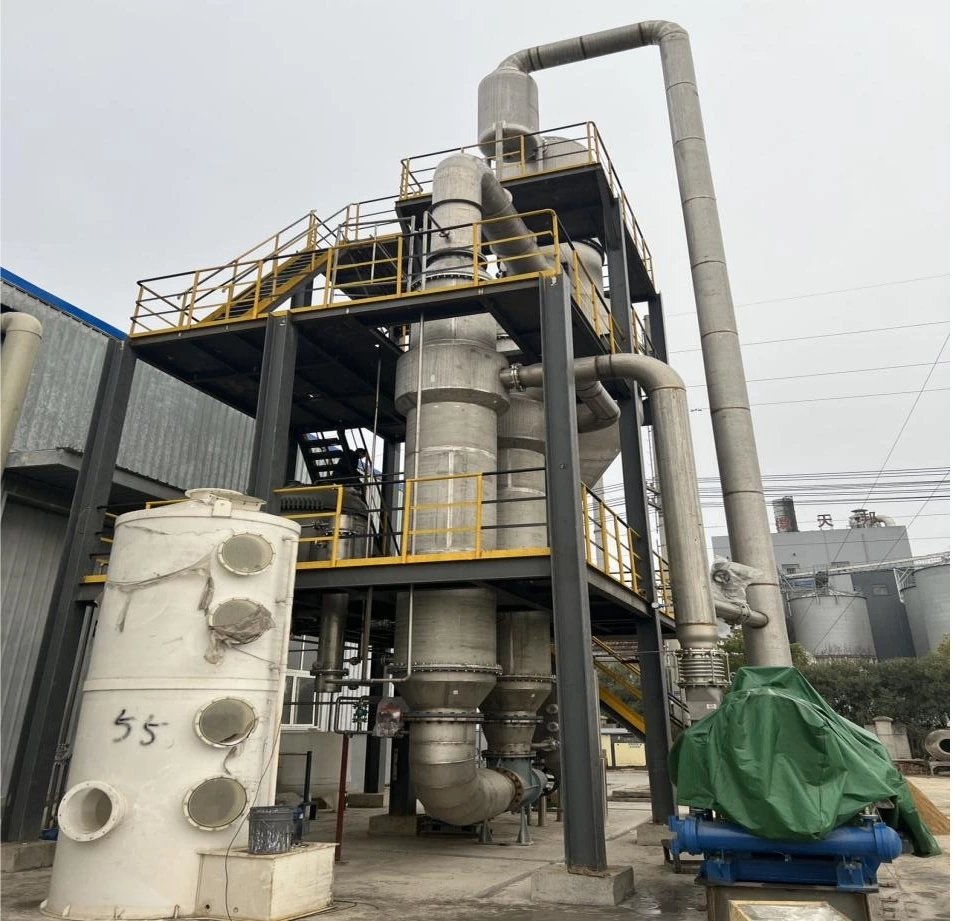
The OSLO continuous freezing crystallizer is an efficient crystallization separation device, mainly used for separating and purifying target substances (such as inorganic salts, organic compounds, etc.) from solutions. Its principles and advantages are as follows:
1.working principle
(1)Continuous feeding and cooling
The solution continuously enters the crystallizer and is indirectly cooled by an external refrigeration system (such as chilled brine, liquid ammonia, etc.), gradually lowering the solution temperature to below the crystallization point of the target substance.
The cooling process usually adopts multi-stage gradient cooling to avoid sharp fluctuations in undercooling (supersaturation) and promote uniform crystal growth.
(2)Crystallization and Suspension
The solution remains in flow under the action of stirring or a circulating pump, and the crystals grow slowly in a suspended state, avoiding agglomeration or adhering to the vessel wall.
The crystal size and morphology (such as particle size distribution) can be regulated by controlling the stirring speed and cooling rate.
(3)Solid-Liquid Separation and Discharge
The crystallized slurry is continuously separated through a centrifuge, filter or hydrocyclone. The mother liquor is returned to the system or further processed, and the crystal product is discharged.
Some of the mother liquor may be recycled to the feed end to enhance the utilization rate of raw materials.
(4)Automation Control
By using sensors (such as temperature, concentration, and particle size monitoring) and PLC/DCS systems, parameters such as cooling rate and feed flow rate are adjusted in real time to ensure stable operation.
2.technological superiority
(1)High efficiency and energy conservation
Continuous operation avoids the frequent start and stop of intermittent equipment, resulting in lower energy consumption; multi-stage cooling can recover cold energy and improve energy efficiency.
(2)The product has high purity and yield.
The slow and controllable crystallization process reduces the inclusion of impurities, resulting in higher purity of the crystals; the mother liquor circulation design improves the utilization rate of raw materials.
(3)Strong adaptability
It can handle high-viscosity and easily scaling solutions and is suitable for corrosive media.
By adjusting parameters to adapt to different systems (such as salts, organic acids, etc.).
(4)Scale and Environmental Protection
Continuous production is suitable for large-scale industrialization and reduces waste liquid discharge.
(5)Low maintenance cost
Anti-scaling design and automated control reduce the need for manual intervention and extend the service life of equipment.
3.Typical application scenarios
Chemical industry: Purification of inorganic salts such as sodium sulfate, sodium chloride, and potassium nitrate.
Environmental protection field: High-salt wastewater treatment (such as salt separation and crystallization in zero-discharge processes) 。
Food/Medicine: Crystallization and purification of organic acids such as lactic acid and citric acid.


